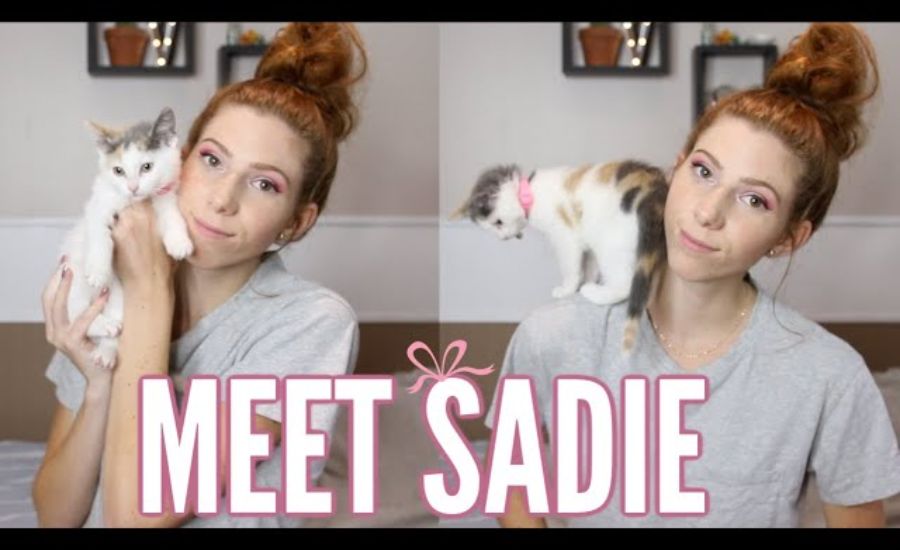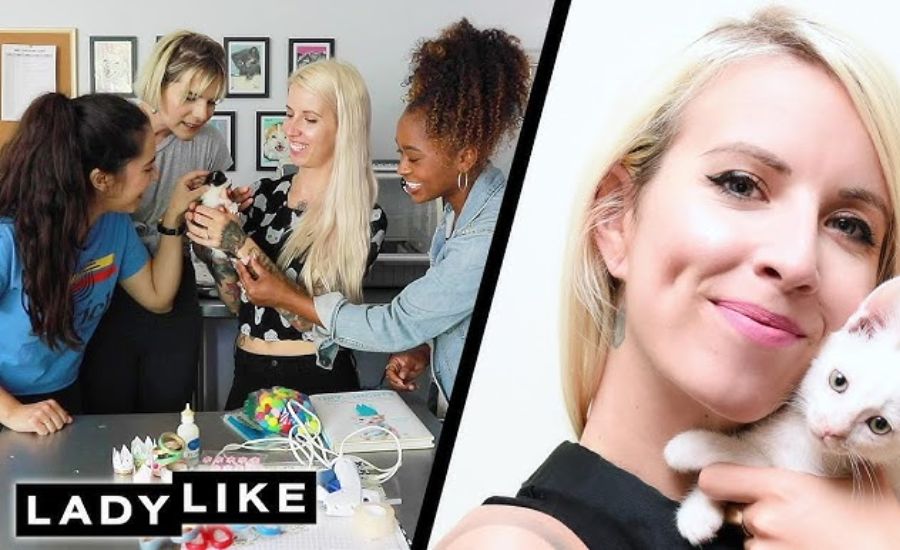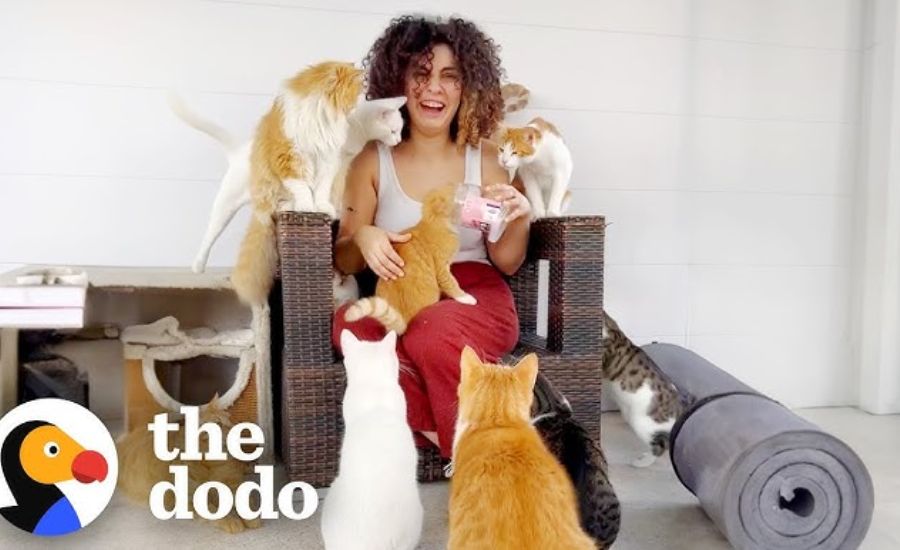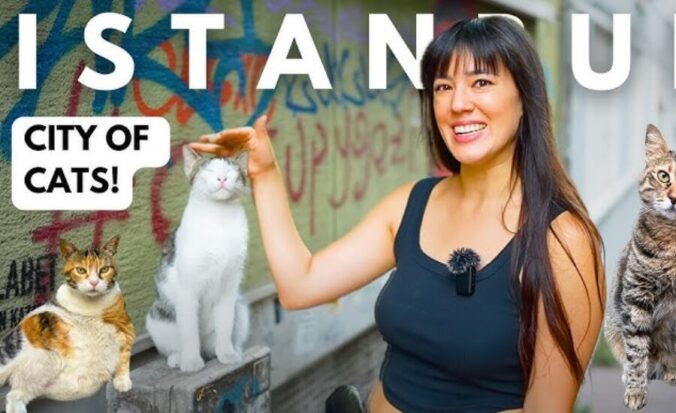Introduction to National geographic cat lady blackburn
The story of the National Geographic Cat Woman Blackburn is one of sympathy, commitment, and the transformative control of person activity. Known for her energetic promotion for cats and creature welfare, she has gotten to be a image of trust for surrendered and ignored creatures. This comprehensive direct digs into her story, investigating how her endeavors caught the consideration of National Geographic, the affect of her work on communities, and the profitable lessons we can learn from her. Whether you’re an creature significant other or basically inquisitive approximately her work, this direct gives all the points of interest you require to get it her bequest and connect her cause.
The Motivating Travel of the National Geographic Cat Woman Blackburn
The National Geographic Cat Woman Blackburn is a exceptional person whose commitment to protecting and caring for stray cats has earned her far reaching reverence. Whereas not authoritatively partnered with National Geographic, her story adjusts with the organization’s topics of kindness, preservation, and the bond between people and creatures. Her endeavors have changed the lives of endless cats and propelled others in her community to connect the cause.
The Beginning Story: How It All Began
Blackburn, like numerous urban zones, has battled with a critical stray cat issue for a long time. Surrendered pets, non domesticated cat colonies, and constrained mindfulness approximately spaying and fixing have contributed to the issue. Against this background, the Cat Woman of Blackburn started her mission. Her travel begun submissively when she protected an harmed cat she found close her domestic. This single act of thoughtfulness snowballed into a deep rooted commitment to creature welfare.
Why Is the National Geographic Cat Woman Blackburn Important?
The National Geographic Cat Woman Blackburn
The National Geographic Cat Woman Blackburn plays a exceptionally significant part in taking the creature welfare issue to the another level, not as it were on the neighborhood but too on the worldwide level.
Her work is distant from protecting cats; she is an persuasive voice for the centrality of mindful pet proprietorship, morals in the treatment of creatures, and the significance of embracing or maybe than shopping for pets.
Her endeavors emphasize that each cat merits a chance to flourish, which is more than fair keeping them lively; it’s making beyond any doubt they have a secure environment and legitimate care.
This is what makes her work so critical. She is a part demonstrate to numerous in how small-scale activities can lead to big-time transformations, whether for one creature or the add up to communal approach to the welfare of animals.
National Geographic’s part in opening up such endeavors is critical. Centering on stories of individuals like the National Geographic Cat Woman Blackburn, National Geographic highlights the significance of grassroots creature care whereas too appearing that this kind of activism can have worldwide swell effects.
Who Is the Cat Woman Blackburn?

The Root of the Title
The “Cat Woman Blackburn” is a term affectionately utilized to depict a lady who has devoted her life to protecting, restoring, and rehoming cats. Based in Blackburn, a town with a wealthy social history, her work amplifies past basically caring for animals—she addresses broader issues of creature welfare and education.
Her Association with National Geographic
National Geographic’s intrigued in her work stems from its commitment to sharing stories that motivate alter. By highlighting her endeavors, they have brought worldwide consideration to the challenges confronted by stray and non domesticated cats and the arrangements that can offer assistance communities address these issues sustainably.
Practical Direct for Yearning Cat Rescuers
If the story of the National Geographic Cat Woman Blackburn rouses you, here’s how you can make a difference:
Starting Your Possess Protect Mission
Legal Arrangements: Check nearby controls for creature protect and sheltering.
Resources Required: Secure a secure space, nourishment supplies, and fundamental therapeutic equipment.
Networking: Interface with neighborhood veterinarians and creature welfare organizations.
Best Hones for Cat Care
Provide adjusted nourishment custom fitted to each cat’s needs.
Ensure standard immunizations and insect treatments.
Offer enhancement exercises like toys and scratching posts to keep the cats rationally stimulated.
Managing Stray Cat Challenges
Humane Catching: Utilize teased traps to capture non domesticated cats safely.
Spaying/Neutering: Avoid assist populace development by sterilizing the cats.
Release or Rehome: Discharge non domesticated cats back into their recognizable environment if rehoming is not possible.
The Part of the Cat Woman Blackburn in Creature Welfare

Advocating for Stray Cats
Her essential center is protecting stray and deserted cats, giving them with restorative care, shield, and cherish. Over the a long time, she has spared incalculable lives and rejoined numerous misplaced pets with their owners.
Challenges in Creature Advocacy
Despite her commitment, she faces critical deterrents, counting restricted assets, open misguided judgments approximately wild cats, and the enthusiastic toll of her work. However, her flexibility proceeds to motivate many.
Impact on Neighborhood Communities
Through her activities, Blackburn has seen a diminishment in stray cat populaces and a rise in community association. Instructive workshops and mindfulness campaigns have advance set her part as a community leader.
National Geographic’s Part in Increasing Her Story
The Control of Storytelling
National Geographic employments its stage to highlight impactful stories, and the Cat Woman Blackburn’s endeavors fit superbly into its account. Articles, photo papers, and indeed potential narrative highlights grandstand her every day battles and victories.
Educating the Masses
Through these highlights, National Geographic teaches perusers around dependable pet proprietorship, the significance of spaying and fixing, and the esteem of sympathy toward animals.
Lessons We Can Learn from the Cat Woman Blackburn
Sustainable Creature Welfare Practices
Her work instructs us that maintainable arrangements, such as spay-and-neuter programs and cultivating systems, are key to decreasing stray populaces and guaranteeing creature welfare.
Building a Strong Community
Her capacity to rally neighborhood volunteers, secure subsidizing, and collaborate with other organizations illustrates the control of collective action.
Celebrating National Cat Woman Day
The Advancement of the Cat Woman Image
The term “cat lady” has advanced from a generalization to a identification of honor, celebrating people who commit their lives to creature welfare.
Ideas for Celebrating
To honor her work, consider embracing a cat, volunteering at a shield, or essentially sharing her story to rouse others.
How You Can Help
Donate to Neighborhood Covers: Your commitments can support therapeutic care, nourishment, and shield for protected animals.
Volunteer Your Time: Numerous covers require offer assistance with day by day operations or organizing events.
Spread Mindfulness: Utilize social media to share the significance of creature welfare.
Start Your Possess Activity: Take after in her strides by pushing for strays in your community.
The Part of Media and Recognition

Media scope has played a crucial part in intensifying her endeavors. In spite of the fact that she has not been formally included by National Geographic, her story encapsulates their ethos of human-animal association. Social media stages have moreover been significant, permitting her to share overhauls, raise stores, and rouse others to take action.
Lessons Learned and Future Goals
Reflecting on her travel, the Cat Woman emphasizes the significance of diligence and community bolster. Looking ahead, she trusts to grow her protect operations, set up a committed protect, and proceed pushing for stray creatures on a bigger scale.
Facts
- The Cat Woman Blackburn:
- Known for her tireless advocacy for stray and abandoned cats.
- Based in Blackburn, a town with a rich cultural history.
- Works to rescue, rehabilitate, and rehome cats.
- Inspiration and Impact:
- Began her journey by rescuing an injured cat near her home.
- Has reduced stray cat populations and raised community awareness about animal welfare.
- Focuses on spaying/neutering programs, proper pet care, and community collaboration.
- Connection to National Geographic:
- Although not officially affiliated with National Geographic, her story aligns with its themes of compassion, conservation, and the human-animal bond.
- Her efforts have gained attention through storytelling, highlighting her role as a grassroots activist.
- Challenges Faced:
- Limited resources.
- Public misconceptions about stray cats.
- Emotional and physical demands of her work.
- Sustainable Practices Promoted:
- Spay-and-neuter programs.
- Fostering systems for rehoming cats.
- Humane trapping and release for feral cats.
- Community Engagement:
- Conducts workshops and campaigns to educate people about responsible pet ownership.
- Inspires local and global support for animal welfare.
Summary
The story of the “Cat Woman Blackburn” highlights a woman’s deep commitment to rescuing stray and abandoned cats in Blackburn. Her journey began with a single act of kindness and has grown into a full-scale animal welfare initiative. While she is not officially affiliated with National Geographic, her story aligns with the organization’s values, drawing attention to grassroots activism in animal care.Through her efforts, she has helped reduce stray cat populations, educated communities about responsible pet ownership, and emphasized sustainable practices like spaying/neutering. Despite facing challenges such as resource limitations and public misconceptions, her resilience has inspired others to join her cause.
National Geographic and other media outlets have amplified her work, showcasing the global impact of local animal advocacy. Her story is a reminder of how small actions can lead to transformative changes for animals and communities alike.
FAQs
Who is the Cat Woman Blackburn?
The Cat Woman Blackburn is a compassionate advocate for stray and abandoned cats in Blackburn. She rescues, rehabilitates, and rehomes cats while raising awareness about animal welfare.
Why is she associated with National Geographic?
While not officially partnered with National Geographic, her work reflects the organization’s values of compassion, conservation, and human-animal connections. Her story has gained attention through media coverage.
What are her main contributions to animal welfare?
- Rescuing stray and abandoned cats.
- Promoting spaying and neutering to control populations.
- Educating the public about responsible pet ownership.
- Encouraging fostering and adoption instead of purchasing pets.
What challenges does she face?
She struggles with limited resources, public misconceptions about feral cats, and the emotional toll of rescuing animals.
How can I help her cause or support animal welfare?
- Donate to local shelters or her initiatives.
- Volunteer at animal shelters or help organize events.
- Promote animal welfare through social media.
- Advocate for spaying/neutering and responsible pet ownership.
What lessons can we learn from her work?
- Grassroots efforts can lead to significant change.
- Community collaboration is crucial for sustainable animal welfare.
- Compassion and persistence are essential in advocating for vulnerable populations.
How does her work impact the community?
Her initiatives have reduced stray cat populations, fostered community involvement, and educated people about the importance of treating animals ethically.
How can I start a similar project in my community?
- Research local regulations and secure resources like space, food, and medical supplies.
- Network with veterinarians and animal welfare organizations.
- Raise awareness about animal welfare through workshops and social media.
- Focus on sustainable practices such as spaying/neutering and fostering systems.
Read more Information about Lifestyle at Visit SearchKnowledge.org

Leave a Reply